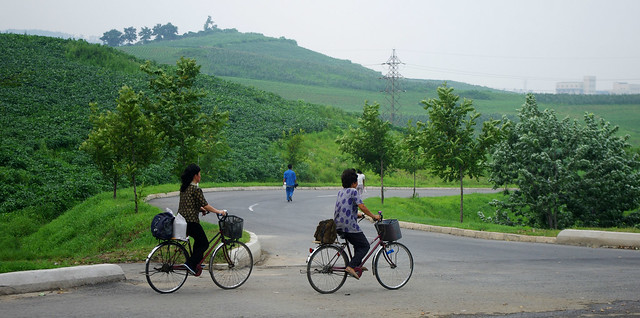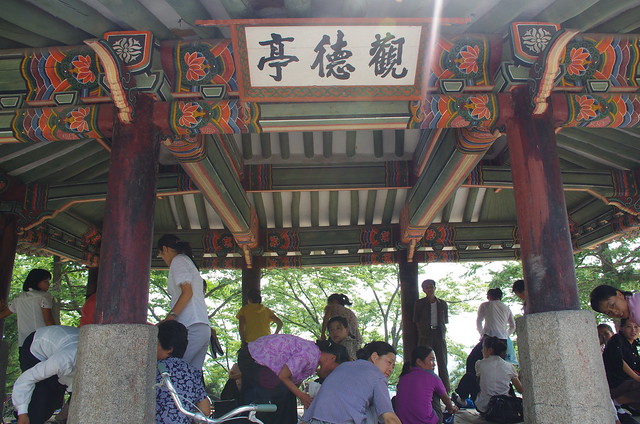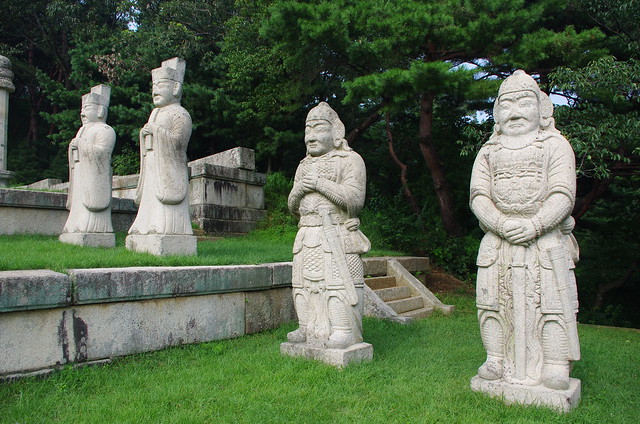A lot has been said about the quality of life in North Korea’s rural areas that it’s initially hard to tell which is real and which is fake. For sure, some of them seem too far-fetched to be true – or are they? During those rare times when we got to venture out of Pyongyang, I couldn’t help but look out of the bus window at every chance I got. Would I be able to see any evidence of the starvation, the prison camps, the nuclear facilities? Judging by what we saw by the road side, it was evident that things operated at a different rhythm here.

They say that a good way to gauge a country’s level of development is to take quick glance at its rural areas. The countryside of North Korea did afford us a few observations. For one, there were no animals to be seen. We did not see a single chicken, pig, goat or cow outside toiling the fields. Moreover, everything was done with human hand. There were barely any machines seen that could harvest the many road side plantations (likely to have been deliberately placed to show the country as self-sustaining) we saw along the way.
Perhaps the most startling thing about journeying through the North Korean countryside was to see wide, 8-lane highways with nary a car (except for ours) in sight. During certain moments, it felt apocalyptic, as if we were the last remaining people on earth. We were to later learn that even to travel domestically, North Koreans need special permits and that perhaps explained things to a certain extent.
Rural areas aside, another place to see a “less edited” version of the country would be in its secondary cities. Pyongyang is the showcase capital, a place to live for the privileged class. Other city dwellers live in the smaller towns and cities. Those long drives on bumpy, desolated roads did lead us somewhere after all. This included Kaesong, the site of the well-known joint venture industrial zone with South Korea which was halted at the time of our visit. Earlier this year, several ancient sites around town became newly minted UNESCO World Heritage Sites. We did get to see these places but it seemed that our guides were still oblivious to this global recognition bestowed upon them. Apparently, the guys over at UNESCO have not yet had the chance to put up the customary UNESCO plaque like they did in other sites.
kaesong – this town’s got genuine tourist potential
The trouble of getting to North Korea aside, I found Kaesong to show the most tourism potential among all the cities in the country. Winding, cobblestone lanes, houses built in traditional Northeast Asian style, well-manicured parks and gardens; it was like an undeveloped version of Lijiang, sans the breathtaking scenery and tribal culture. Like in Hanoi, Kaesong also had its own more humble “Temple of Literature” dedicated to Confucius which has now been converted into the Koryo Museum. This was the place to go to see more traditional Korean culture and architecture, something like South Korea’s Gyeongju.
they ran away upon seeing us!
Despite our visit coinciding with North Korea’s peak tourist season, we found any interaction with locals to be awkward at best and all preplanned. One time, we chanced upon a group of townsfolk gathered upon a pavilion. This was obviously unplanned. As we approached, they ran off as if they’d just seen some ghosts!
tomb of king kongmin in the outskirts of kaesong
With us having no choice but to fall back to our mandatory guides to give us whatever knowledge we can dig up about the country, we then crisscrossed past some winding semi-paved roads until we reached King Kongmin’s tomb. In keeping with traditions in the Sinosphere, the Koreans also had a knack for burying their kings in elaborate tombs on elevated areas (the tombs of the Vietnamese emperors in Hue are another example). A more unusual element though is the tendency to bury their kings in mounds. This is similar to the ancient mausoleums in South Korea, except that the ones in Kaesong are much less visited.
With the trip around North Korea almost done, I was really yearning by this time to go back to the “free world.” North Korea is an interesting and beautiful place, but the cultural shock is so great that it’s easy to overlook the country’s highlights in favor of the lack of personal freedoms. Nevertheless, North Korea was one country I had always wanted to visit and I’m glad to have had this eye-opening experience. The visit to the countryside only served to enhance it.












North Korea is also at the top of my list of places to visit, and I’m always eager to read blogs and look at pictures taken from there. Thanks for sharing these!
That said, I’ve seen a lot of documentaries and accounts of travelers who’ve been there. Was it as you expected it to be? How do you feel now that you’ve seen and experience North Korea? Would you go back?
Yes, it was what I expected it to be! But still it felt very surreal being there, not knowing for sure what is real and what’s not.
On whether I’d go back … definitely! There were many places I didn’t manage to visit this time around and the weather was not so good as well when I was there! Am thinking of going back next time maybe during autumn! 🙂
wow, i envy you man…. lol.
I know exactly what you mean about the roads. It was the first thing I thought when our plane was landing and I was looking at the big roads – where are all the cars?!
Strange, right? My guide said that it was all because of their “foresight” in preparation of a future where there’ll be more people using the roads 🙂
Wow North Korea! It has always been my dream to visit that mysterious country! May I ask if How much would a trip to PRK would cost in peso? and how could a Philippine Passport Holder apply for a visa? How to get there? I’m pretty sure there are no direct flights from MLA to PRK right? Thank you very much and hope you could reply to my questions 🙂
Hi Richelle! Trips to DPRK have to be handled by a travel agency. A visa is necessary and can be picked up from Beijing as there’s no DPRK embassy in Manila.